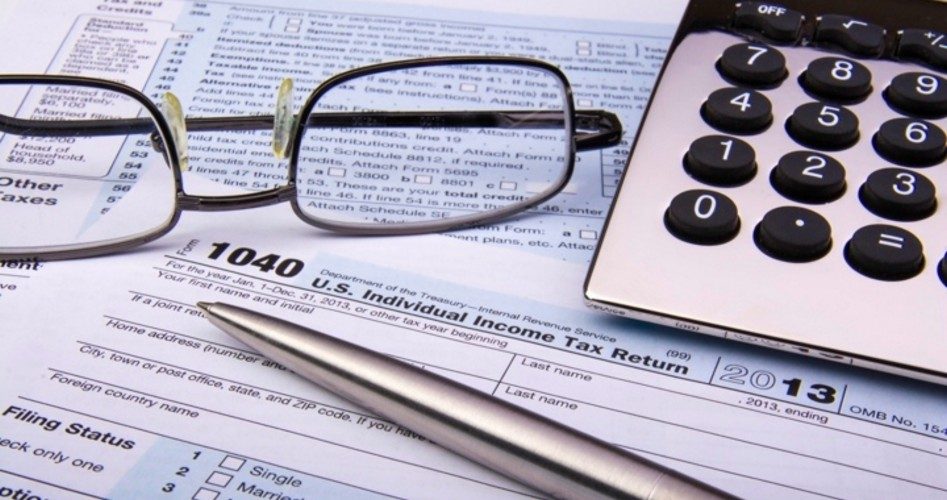
The loud and persistent cry we hear from Democrats, liberals, and progressives is that “the rich” aren’t paying their “fair share” of taxes. What they really mean is that “the rich” aren’t paying their “fair share” of federal income taxes, since “the poor” are certainly paying Social Security tax of 6.2 percent and Medicare tax of 1.45 percent on every dollar of their income, as well as state sales taxes and federal excise taxes on things like alcohol and gasoline.
Yet, contrary to this claim, the IRS says that about half of Americans pay no income tax. Since that half is made up of the poor, it appears that it is the poor that are not paying their fair share, not the rich.
According to the latest data from the IRS, in tax year 2010, the top 1 percent of taxpayers (in terms of adjusted gross income) paid 37.38 percent of all federal income taxes. The top five percent of taxpayers paid 59.07 percent. The top 10 percent of taxpayers paid 70.62 percent. The top 25 percent of taxpayers paid 87.11 percent of the taxes, and the top 50 percent paid a whopping 97.64 percent.
The poor aren’t paying their fair share because of the progressive tax brackets. The current tax brackets are 10, 15, 25, 28, 33, 35, and 39.6 percent (for those making over $400,000 a year [$450,000 for married filing jointly]). From its very beginning, the U.S. tax code has sought to punish higher-income earners with a progressive income tax.
The income tax began with a 1 percent tax on taxable income above $3,000 followed by a series of surcharges of up to 6 percent applied to higher incomes. The maximum rate of 7 percent was applied to taxable income over $500,000. The tax rate in the highest tax bracket rapidly increased, up to 67 percent in 1917, 77 percent in 1918, 81 percent in 1940, 88 percent in 1942, and 94 percent in 1944. During the 1980s, the top marginal rate fell to under 30 percent for the first time since 1931 before slowly rising to the 39.5 percent it is now.
Although the top rate is not as high as it once was, the principle that higher-income earners should be punished for their success is still enshrined in the tax code.
The poor aren’t paying their fair share because of personal exemption and itemized deduction reductions. Thanks to the American Tax Relief Act of 2012, the PEP provision (personal exemption phase-out) and the Pease provision (named after Rep. Donald Pease, a Democrat from Ohio) that limits itemized deductions were reinstated.
A taxpayer is entitled to a personal exemption of $3,900 for himself, his spouse, and each of his dependents. But this is subject to a phrase-out for taxpayers with adjusted gross incomes of $250,000 or more ($300,000 for married filing jointly). It completely goes away once adjusted gross income reaches $372,500 ($422,500 for married filing jointly).
A taxpayer is entitled to a standard deduction of $6,100 ($12,200 for married filing jointly). A taxpayer with deductions greater than this amount is allowed to itemize them and deduct all of them from his adjusted gross income — as long as he doesn’t make $250,000 or more ($300,000 for married couples filing jointly). Then the value of certain itemized deductions can be reduced by up to 80 percent. Additionally, if you itemize deductions and your adjusted gross income is more than $100,000, your deduction for mortgage insurance premiums is reduced; if your income is more than $109,000, you cannot take the deduction at all.
The poor aren’t paying their fair share because of the phase out of certain tax deductions and credits. Make over a certain amount of money and the government will start phasing out your tax deductions and credits; make a little more and the government will take them away altogether.
The tuition and fees deduction of up to $4,000 for educational expenses is lowered to a maximum of $2,000 once modified adjusted gross income exceeds $65,000 ($130,000 for married filing jointly) and eliminated if income exceeds $80,000 ($160,000 for married filing jointly).
The student loan interest deduction of up to $2,500 begins to be phased out once modified adjusted gross income exceeds $60,000 ($125,000 for married filing jointly) and is not allowed once income reaches $75,000 ($155,000 for married filing jointly).
The child credit of up to $1,000 is reduced by 5 percent for each $1,000, or part of that amount, above the phase-out amount of $75,000 ($110,000 for married filing jointly) of modified adjusted gross income.
The child and dependent care credit is 35 percent of expenses up to a maximum credit amount of $3,000 for one child and $6,000 for two or more children. But if earned income is over $15,000, that percentage is reduced by 1 percent (down to a minimum of 20 percent) for each $2,000, or part of that amount, of income above $15,000.
The retirement savings contributions credit (up to $1,000 or $2,000 for married filing jointly) cannot be claimed once adjusted gross income exceeds $29,500 ($59,000 for married filing jointly). IRA contributions for those covered by a retirement plan are reduced when modified adjusted gross income exceeds $59,000 ($95,000 for married filing jointly) and not deductible at all once modified adjusted gross income reaches $69,000 ($115,000 for married filing jointly).
The adoption credit begins to phase out once modified adjusted gross income exceeds $194,580 and cannot be claimed once modified adjusted gross income surpasses $234,580.
The American opportunity credit for educational expenses of up to $2,500 for each student can be claimed only if modified adjusted gross income is not over $90,000 ($180,000 for married filing jointly). A phase-out of the credit begins at $80,000 ($160,000 for married filing jointly).
The lifetime learning credit for educational expenses of up to $2,000 cannot be claimed if modified adjusted gross income reaches $61,000 ($122,000 for married filing jointly). And a phase-out of the credit begins at $51,000 ($102,000 for married filing jointly).
The poor aren’t paying their fair share because of refundable tax credits. Tax credits reduce the amount of tax owed. However, if there is no tax owed because exemptions and deductions have eliminated or substantially lowered taxable income, then few or no credits can be taken. Refundable tax credits are not limited by taxable income. They can be taken even when no tax is owed. They are treated as a payment from the taxpayer like the tax withheld from his pay. The taxpayer receives a refund of the difference between the “payments” and the taxes owed. Refundable tax credits can amount to a significant part of a family’s income.
The three main refundable tax credits are the earned income credit, the additional child credit, and the American opportunity credit.
The earned income credit is fully refundable. It provides up to $6,044 for individuals with three or more qualifying children and earned income of less than $46,227 ($51,567 for married filing jointly), up to $5,372 for individuals with two qualifying children and earned income of less than $43,038 ($48,378 for married filing jointly), up to $3,250 for individuals with one qualifying child and earned income of less than $37,870 ($43,210 for married couples), and up to $487 for individuals with no qualifying children and earned income of less than $14,340 ($19,680 for married filing jointly).
The additional child credit is the refundable portion of the child credit. Those who are unable to take full advantage of the $1,000 per child tax credit because their tax owed is less than the amount of the credit can receive a refund of the smaller of the remaining child credit and 15 percent of taxable earned income that is over $3,000, up to $1,000 per child.
Forty percent of the American opportunity credit is refundable. Since the credit is 100 percent of the first $2,000 plus 25 percent of the next $2,000 in educational expenses for each eligible student, up to $1,000 per student can be refunded to the taxpayer.
Because of the progressive nature of the tax brackets, and the personal exemption and itemized deduction reductions, the phase-out of tax deductions and credits, and refundable tax credits that make the system even more progressive, the liberal idea that the rich aren’t paying their fair share is ludicrous. It is the poor who aren’t paying their fair share.
Consider the example of a typical family with two children. For tax year 2013, there would be no taxes due on an income of up to $47,849. From an income of this amount, this family receives personal exemptions totaling $15,600 ($3,900 x 4), and is entitled to a standard deduction of $12,220. Although this leaves a taxable income of $20,049, the tax liability on that amount is $2,111. But thanks to a child tax credit of $1,000 per child, that amount is reduced to just $111. And then, because of an earned income tax credit of $116, this family not only owes no income tax, but receives a $5 refund.
The solution to this disparity is not to make “the poor” pay their “fair share.” The solution is to substantially reduce the tax burden of those who are paying the taxes now. During one of congressman and presidential candidate Ron Paul’s appearances on the Tonight Show, the host mentioned that Paul had indicated that he wanted to eliminate the income tax. Paul’s response was: “Sometimes they complain, you know, the lower-half income people, they don’t pay any income tax. And I say we’re halfway there.”



